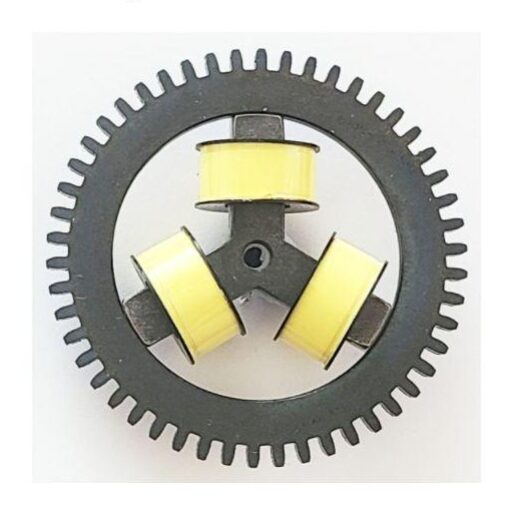Question |
Answer |
1. What is the accuracy of the skip motor angles? |
Each skip angle is depending on the diameters of the rotor and stator. Please see the calculator in the home page. The accuracy depends on the accuracy of machining of the diameters. |
2. What is the maximum torque the skip motor can provide? |
The torque for the first large motor, with the outside ring, was measured at 0.35 Nm, very near the calculated torque from the magnetic forces. It is comparable to the torque of a similar size step motor. |
3. What is the motor’s durability and life expectancy? |
The steel is very durable, and in normal operation there is no friction, just rolling motion. Also, any wear will only change the diameters a bit. Therefore, it may be possible to make such motors from plastic with metal powder for simple applications, such as toys. |
4. Are there restrictions in environmental conditions such as temperature and humidity? |
None. The motor will function in any temperature that the coil’s insulation and bobbins would withstand. |
5. Any undesired environmental operating conditions? |
None. |
6. What is the range of applied voltage? |
The range is from 1.5 V for battery applications (shavers, toys…) to 10KV for high power needs, limited by the insulation. Lower voltage is preferred, as the current is what is creating the magnetic flux. But lower voltage involves heating loss in the coils. |
7. What is the current consumption? |
For the larger motor in the video, 170mA at 24 V. The smaller motor, 30mA at 24 V. Note: There were no simulations done to optimize the currents, timing etc. Finite element analysis of the magnetic design should be made to develop a product. |
8. What is the stop accuracy? |
The motor will need stop switches or sensors. |
9. Is it controlled by pulse input or sinusoidal waveform input? |
Pulse inputs, in two different levels of currents. The higher current for the magnetic force between the two poles that are coming into contact, the lower current to negate the residual magnetism in the pole that should be disconnecting. |
10. What is the step motor’s control circuit? |
The control circuit was built from an Arduino control chip and 3 driver chips. As you can see in the beginning of the first video, the Arduino is the larger chip on the left. The program is run with the programming language C++. |
11. In the video, the motor was turning a large ring first, then a small cylinder next. How do they move if the motor turns both objects at the same time? |
Please see video below demonstrating the Skip Motor with two rotors, 1000 skips each direction. The rotation direction is reversed, and the angle of each step is different. |
